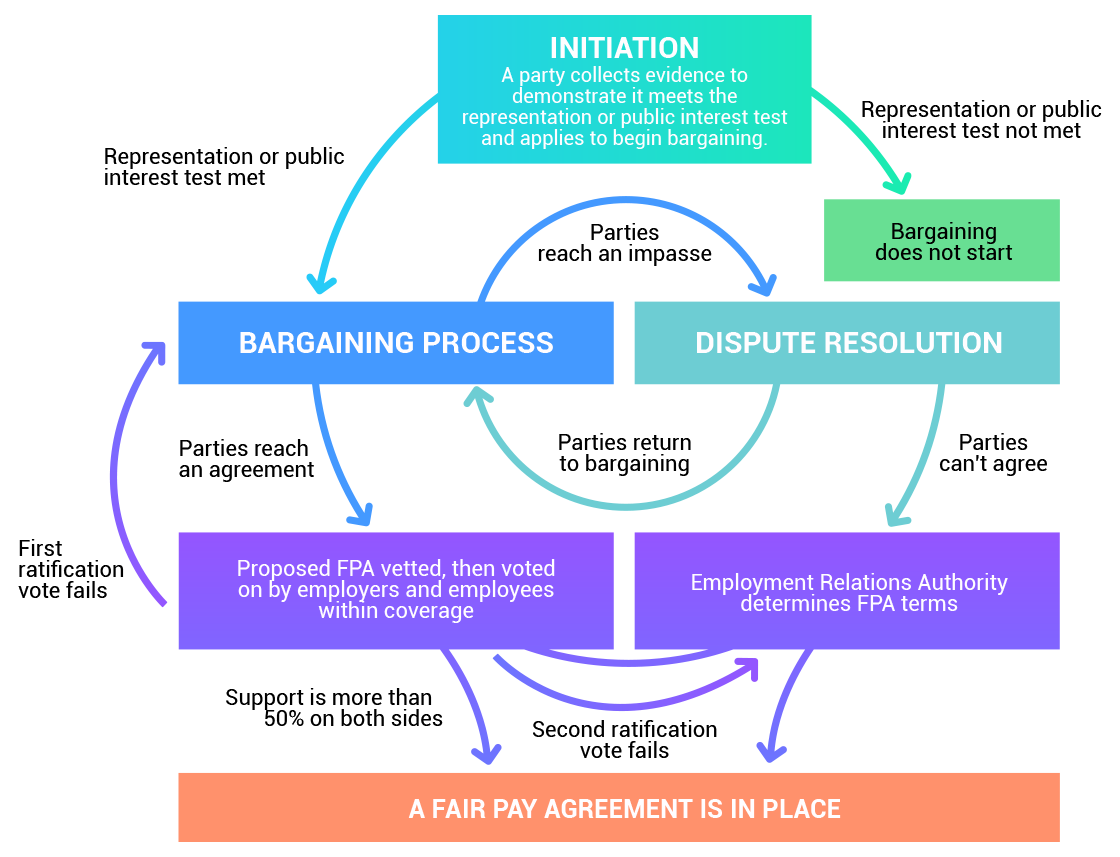By Vaughan Granier
People are calling it the biggest shake-up to industrial relations in New Zealand in 30 years.
Soon to be approved by Parliament, Fair Pay Agreements will potentially affect most industries in the country. Once enacted after 2022, FPAs – which are a mechanism for bargaining to set binding minimum terms and conditions across an occupation or an industry sector – will provide a framework for negotiations across entire industries or occupations, rather than just between unions and particular employers.
As examined in HR Assured’s August 2022 webinar, it is expected that – following successful bargaining – FPAs will set and standardise entitlements such as wages, hours, overtime, leave, redundancy, and penalty rates for workers within a sector (meaning, for example, that a small construction business in Invercargill must comply with an FPA agreed to by large numbers of people in Auckland.)
There remain a few unknown and half-known aspects, however, so here is how much – or how little – we know.
How agreeing on an FPA actually works:
- Following initiation (requiring a public interest declaration, 10 per cent of a workplace or 1,000 workers in an industry sector to initiative) one party in an employment relationship collects evidence to demonstrate representation or public interest. If there is not enough evidence, bargaining won’t go ahead.
- If there is sufficient evidence, what happens next is bargaining and dispute resolution.
- Proposed FPAs are vetted and voted on, guided by the Employment Relations Authority.
- An FPA comes into place if there is more than 50 per cent support on both sides.

What is the Government’s position on Fair Pay Agreements?
Among other things, New Zealand’s Government says it wants FPAs to:
- Increase bargaining power for employees;
- Create an environment “in which businesses compete based on better products and services rather than competing by driving down wages and conditions”;
- Incentivise businesses to invest in training and innovation and create sector-wide coordination; and
- Establish a better dialogue between employers and workers.
What can be expected in terms of pay and employment terms updates and how much they might cost business owners?
Due to the number of people required to initiate bargaining, the first FPAs will likely involve large organisations with many employees.
However, 97 per cent of NZ employers are small and are expected to have to rely on bigger businesses to drive their points of view.
In those cases in which small employers can prove they are going to suffer hardship from an FPA, they don’t have to bargain. For example, the Wellington construction industry could have higher pay rates than Dunedin and a Dunedin building company could potentially prove it doesn’t have to pay as much.
What are the predicted effects on minimum wage rates, union membership, ordinary hours, overtime, penalty rates, redundancies, leave entitlements and health and safety?
- An employer won’t be able to hinder labour organisations such as unions from reasonably accessing workplaces.
- Expect an increase in business costs that businesses may feel unable to control.
- Expect direct employee costs.
- Expect workplace compliance costs.
- Unions will receive a legislatively ‘embedded’ authority – giving them plenty of bargaining power.
- The union movement will be stimulated to grow.
- Smaller employers may be bound by negotiated outcomes that they may not be represented by or able to sustain.
- FPAs will prevent strikes and prevent lockouts.
- Employers may no longer be able to ask employees to ‘job-hop’ or ‘job share’, meaning that one person can go around and do various things). This is predicted to cause difficulty for hospitality venues in which job-hopping is considered the norm.
Support for the bargaining process:
- Both sides will have access to a government-provided bargaining support person.
- If four FPAs are negotiated per year, it is anticipated there will be $50,000 per side for negotiations and there will be additional support for low membership sectors and occupations.
- The NZ Council of Trade Unions and Business NZ each receive $250,000 per year.
What happened when Australia adopted similar industrial awards?
- There was a broader complexity of occupation-based awards in one workplace.
- Overlapping coverage occurred when some workers appeared to be represented by more than one award and some companies were covered by more than one sector award.
- Some complex calculations of entitlements ‘defeated’ automated payroll systems and there were multiple overtime triggers.
- SME employers seemed to bear the brunt of increased wages, compliance, and legal and advisory costs.
How will it all pan out?
Time will tell. Until then, some advice:
- Expect your payroll system to eventually have to incorporate some of the awards from FPAs, so your business doesn’t get into a situation like Woolworths in Australia which had to pay hundreds of millions due to failing to meet the requirements of a revised award categorisation.
- Don’t assume you can get away with delivering certain employment conditions while waiting for an FPA to come in. Be sure to phone HR Assured and ask all your HR and employment questions.
Questions about union access, membership, resources for business owners and especially questions about current pay rates and rights for employees can all be answered by HR Assured.
If you don’t currently have a subscription, we can still help. Reach out to our experts via our 24/7 Telephone Advisory Service.
Vaughan Granier is the National Workplace Relations Manager for HR Assured NZ. He has over 24 years’ experience in international human resources, health and safety, and workplace relations management. With over 13 years working in New Zealand and Australian companies, he provides in-depth support to leadership teams across all areas of HR, Health and Safety, and employee management.




